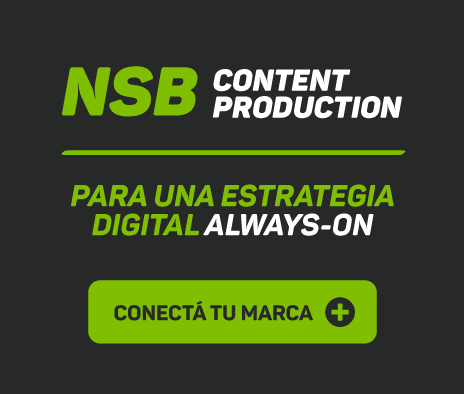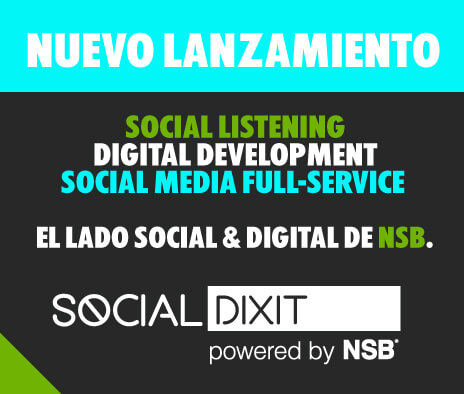The difference between the B2B and B2C communications worlds is simply a matter of knowledge interrogation and application. With greater access to choices, product information and opinions, B2B strategies need a more B2C approach to marketing communications with B2B businesses, looking to gab a potential customer at the ‘zero moment of truth’, with engaging human, consumer focused content and not traditional brochures and dull websites.
For as long as I can remember, professionals in the B2B communications space have professed how different they are to their colleague in the B2C world. Certainly, running a breakfast cereal on-pack promotion requires a different knowledge base to that required to marketing high-pressure valves to gas turbine manufacturers.
However, the wonderful thing about human knowledge (and arguably what sets us aside as a species) is that it can be recorded, taught and subsequently learnt by others, thereby providing a foundation for future problem solving.
From this perspective, the difference between the B2B and B2C communications worlds is simply a matter of knowledge interrogation and application – and it is the latter which is becoming increasingly interesting in the ever more interconnected B2B communications world.
Evolve or die
A major theme of the BMA15 Conference was the need for B2B companies (and their agencies), to evolve their marketing and customer communications strategies or die. Like their B2C counterparts, the B2B customer now spends more time online making purchase decisions that ever before. The majority of their Internet access is via mobile device (Google research suggests that mobile B2B searches are up X3 in 2 years), and 70% admit to basing purchase decisions (in part) on video content. So, if you don’t have a good mobile enabled website, you’re missing out!
Content
The old cliché that ‘content is king’ still holds true but with more data produced in the last two years that the previous entire history of mankind, we have certainly surpassed saturation point with the majority of content now being overlooked completely or filtered out by jaded consumers. Interestingly, Neil Campbell of digital agency CDW, suggests 50% of all internet ad click throughs are in error!
In the B2B space, this is especially true given that it’s late to the online content game. As 3M’s Senior Vice President of Marketing, Jesse Singh said, 80% of B2B is ‘business to boring’. So B2B marketers now need to think about owning the ‘zero moment of truth’ – providing hyper-targeted relevant content to a very specific audience that addresses problems at a human level. Additionally, speed (to market and support) is of the essence as this Adobe video highlights.
From big to small data
Both B2B and B2C marketers are struggling to deal with big data. For B2B marketers the expectation bar has been set high with customers measuring their B2B experiences against the likes of Amazon and Google – who as a result of their size, make big data management and data logistics look easy. This is known as the “relevance gap”.
For smaller business, understanding how to move from big data to small data so as to target customers individually will be a big challenge – but necessary if B2B companies are to ‘make things people want’. Mike Fredrick, Executive Creative Director at Bader Rutter explained that whilst big data is useful, one should “not forget the true consumer”, something that’s all too easy in a complex business ecosystem or extended supply chain. A point highlighted by their client Dow AgroSciences and their need to target crop protection and weed prevention products to US farming families. How do you reach disconnected, cynical multi-generational farmers? Speak to them on a one-to-one basis, in their environment in a language they understand – IE ‘we’ll help you protect the future.
Innovation
A returning speaker to BMA15 was Motorola’s Vice President and Chief Innovation Officer, Eduardo Conrado. This year he was joined on stage by Greg Meyers, Corporate Vice President, Chief Information Office for Solutions and Paul Steinberg, Chief Technology Officer for Solutions. See Motorola Solutions site.
As a business, Motorola has seen many changes over its history (and indeed it has been involved in many business sectors to a greater or less degree of success), but today it defines itself as a technology innovation company with the mission of “helping people be the best in the moments that matter”.
By tightly focusing the business on a few verticals, Eduardo explained that they have been able to build a culture of purposeful consumer focused innovation into the business. It is now a business that ‘watches’ its customers on an on going bases because they can’t (and don’t) always tell you what they want. “Innovation without purpose is wasted energy” -Paul Steinberg
As elsewhere, the speed of innovation in the B2B world is increasing. In 1920 the ‘half-life’ of an S&P top 500 company was 67 years -in 2015 it 15 years. Those that were innovative are not always still innovative. “… an exponential world means exponential innovation” -Paul Steinberg
Learning from B2C
Blackberry’s problems of late have been well highlighted. As Mark Wilson, Senior Vice President of Marketing explained, the business was losing $1.2bn per quarter “which was an unsustainable business strategy”. Blackberry’s solution was to take their learnings (good and bad), in the B2C smartphone space and apply them to their core B2B business – an area where the company continued to have recognized strengths in security and reliability and as such a loyal customer base in mission critical environments and services (medical / military / law enforcement).
Working with GYRO, they are repositioning Blackberry and its latest products as being “serious about business”.
Wilson explained that they “got vertical” and narrowly focused their marketing efforts on several vertical sectors thereby allowing them to adopt a much more targeted and personal communications strategy. The strategy appears to be working thus far as Blackberry (no longer directly competing with Apple and Samsung) is back in profit.
The Internet of Things
The Internet of Things has been much hyped of late with tech evangelists telling us that soon the mundane everyday items in our lives will interact with the Internet. Smart fridges will interact with smart packaging, ordering replacement food when an item is used. Johnnie Walker are experimenting with ‘smart bottles’ that will enable them to directly understand product usage after the point of sale.
For B2B companies however, the Internet of Things represents an evolutionary opportunity to ascend from ‘makers of things’ to ‘providers of services’. Russell Stokes, President of CEO of GE Transportation, explained that as a 100 year old manufacture of locomotives, GE Transportation was totally focused on product. Whilst creating a better product should be the aim of any business, when you build multi-million Dollar locomotives, customers expect them to last and as such the path to purchase is long and the replacement cycle can extend over many tens of years. This is growth restrictive.
GE Transportation’s solution has been to embrace the Internet of Things. Their new locomotives are ‘connected’ to GE centers that continuously monitor the performance of hundreds of parts and systems on the locomotive – alerting customers ahead of potential hardware problems so that replacement parts and servicing can be managed before they become an issue, thereby significantly reducing downtime and (importantly for GE) enabling them to develop a new ‘support’ business that their customers value because it ‘improves their lives’.
“People buy solutions that make customers lives better”
A similar example can be found in the US road haulage industry. Like locomotives, trucks are a large capital investment which have to written down over time so, for their owners small improvements in fuel economy or engine performance really matter.
Mary Aufdemberg, Director, Product Marketing of Daimler Trucks North America, explained that the introduction of connectivity in their product range has allowed them to address the “real cost of ownership” discussion, with their customers as well as creating better, more efficient trucks – the ultimate expression of this being the world’s first (road legal) self driving truck launched last month.
In both cases, communicating such product and service innovations to conservative B2B audiences has required a re-think of the communications strategy. Gone are generic product specification brochures to be replaced by one-to-one solutions orientated sales approaches that put the customer at the centre as never before.
Summary
A fundamental shift in taking place in business marketing and unpopular with diehards as it maybe, the worlds of B2B and B2C communications are coming together with businesses now being forced to address their customers as ‘people’ with unique problems rather than creating blanket products or services for a sector.
With greater access to choice, product information and opinion, B2B customers are creating their own paths to purchase (and like their B2C counterparts) “strolling around the Internet” in search of answers and not necessarily following the tracks laid out for them by B2B companies and their agencies.
This requires a more B2C approach to marketing communications with B2B businesses looking to gab a potential customer at the ‘zero moment of truth’, with engaging, human, consumer focused content and not traditional brochures, spec sheets and dull websites.
B2B businesses are facing unprecedented demands for innovation. It is no longer sufficient to just to make things and find a market for them, businesses need to make ‘products people actually want’.
On going (intelligent / connected) support solutions that enable customers to make significant savings or improvements to their operation are also becoming essential. Again, this leads to a more B2C like environment in which engagement is ongoing and bespoke, backed up by small data solutions.
The B2B world has changed – it has ‘got personal’ but, unlike the B2C world, the relationships are more complex, less fickle and longer term. It’s about business to people now.
–
Business Marketing Association
Annual Conference:
Chicago, 27th – 29th May 2015
“BMA15 – Be More”
____________________
Paul Squirrell
MAGNET GLOBAL NETWORK
May 2015
Foto vía: tellyourstoryinc.com


 Versión PDF
Versión PDF





